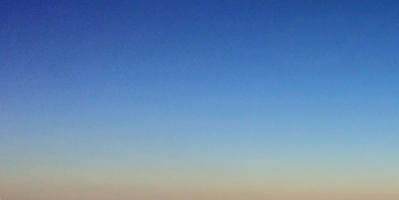Visiting Pilots
Visitors are always welcome, whether just to have a look at what we do or for air experience flights. If you are unfamiliar with the aircraft, airfield operations and procedures, please ask members for assistance.
If you are a pilot planning to fly in, please read carefully and refer to the information below.
Please note that our gliders have a placarded maximum weight limit, generally 110kg per seat. Passengers and/or pilots heavier than the placarded weight limit of the particular glider or seat cannot fly that aircraft.
Location
Balaklava Airfield is located 11 km north-west of Balaklava on Whitwarta Rd., some 100 kms north of Adelaide, South Australia. The entrance to the Balaklava Gliding Club is via a gate and entrance road just off the main Balaklava to Snowtown road . The entrance gate is locked when no club members are present.
- The address for Navigation Apps is 12 Lower Templeton Rd. Whitwarta.
- Ample car parking is available around the club facilities.
- Glider trailers may be parked in designated areas, ask a club member for assistance.
Please travel slowly on the entrance road to the club. Families with children are regularly present and dust is a nuisance to the caravan park in the drier months. Members and visitors are reminded that the speed limit on the airfield is 30km/h. Please be mindful of people and other obstacles when driving a vehicle on the airfield.
Contacts
Telephone: (08) 8864 5062
Note: This phone is forwarded to a member during the time when no one is present at the airfield. The Club member may reside in Adelaide.
E-mail: admin@bgc/.asn/.au
Internet: bgc.asn.au
President: president@bgc/.asn/.au
Airfield
Airfield: Balaklava (YBVA) – 10km NW of Balaklava on Whitwarta Rd.
Position: 34° 05′ S, 138° 20′ E, Elevation 150ft AMSL.
Radio: CTAF 126.7 MHz (122.7 glider to glider).
The radio is only monitored when members are present. Radio’s are installed in the clubhouse and in the pie-cart.
The Balaklava Gliding Club airfield, which is owned by the club, has two clearly delineated airstrips. The airstrip “roads”, which are clearly visible, are used by the club winches for laying out winch cables in readiness for the launching of gliders. These roads have a formed crown to aid drainage and should be avoided if possible during flying operations.
The airstrip orientation is:
- Main Airstrip: 16 / 34 1300 metres
- Cross Strip: 13 / 31 1200 metres
The airfield is 150 feet above sea level.
During winter and spring, there is a high likelihood that the areas adjacent to the airstrips will have crops growing. During summer, after reaping, all areas may be used if necessary.
Note all of the airstrips have post and wire fences across the approaches.
Windsocks are located as follows:
- Main Windsock Adjacent to the intersection of the airstrips.
- Secondary Windsock Located on the southern boundary of the airfield midway between the 31 and 34 approaches.
Cars towing gliders are permitted to travel to the take-off points as necessary. Drivers should be alert for winch wire and other gliders which may be operating. All care must be taken to limit any impact on flying activities which may be in operation. Club members would be pleased to assist you if required.
Vehicles not towing gliders must proceed to the take-off point via the roads outside the airfield boundary. This will prevent conflict with flying activities and reduce dust on the airfield.
Landing /manoeuvring areas are established alongside the winch roads. These areas are suitable for all gliding activities.
Pilots should be aware that in the event of congestion and to avoid incidents/ accidents, landing long is an accepted option.
The airfield boundary fences cross each of he airstrip approaches. These are clearly marked with white markers.
Our winches employ high tensile dyneema rope. This rope can be expected to lie flat when laid out behind the winch (two ropes run from an anchor at the launch point all the way to the winch). It is potentially hazardous to cross the winch lines by landing/ taxiing aircraft or by vehicle. Please ask a club member if unsure whether it is safe to cross a runway.
Club Instructors may be available for winch launch training.
Gliders entering the circuit area, regardless of the position in which the circuit is entered, must make a radio call on 126.7 MHz, indicating the glider call-sign, the location at which the circuit is being entered and the airstrip to be used.
Radio calls should be made at any other time to enhance air safety.
Flying Operations
Flying operations are usually conducted at Balaklava only on weekends, although mid-week flying may be organised.
An Instructor is rostered for each day on weekends.
Flying Instruction is available to visiting pilots. An Instructor is likely to request that a check-flight be undertaken if a Balaklava Gliding Club aircraft is to be flown or a visiting pilot is not current on winch launch.
Visiting pilots are encouraged to seek a check flight if:
- not current on winch launch methods
- not familiar with the airfield / area
Pilots seeking a winch launch endorsement must make this known to the Instructor. A brief note on winch launching is obtainable for your information at the clubhouse.
Log Books
The Duty Instructor will request to see your personal log-book. This is to provide an indication of the gliders flown and the pilots currency. The Instructor will make a log book entry to confirm flying, launch check etc if requested.
Visiting pilots may be able to fly Balaklava Gliding Club aircraft only with the approval of the Duty Instructor after a check-flight.
Controlled Airspace
The airspace immediately above the Balaklava Gliding Club airfield is Controlled Airspace with a lower limit of 8500 feet (QNH).
A map defining these limits and others within the region north of Adelaide is available within the clubhouse.


